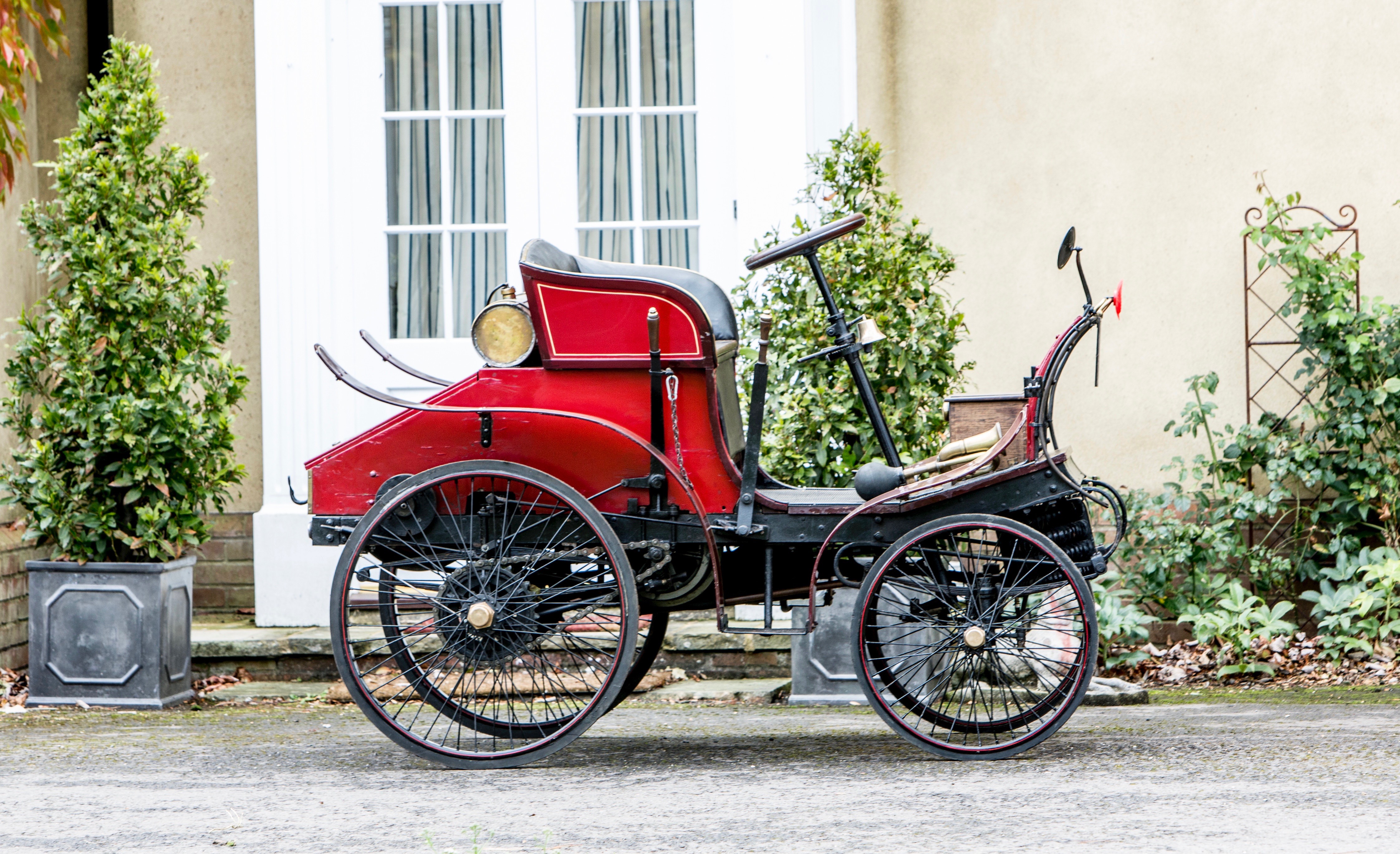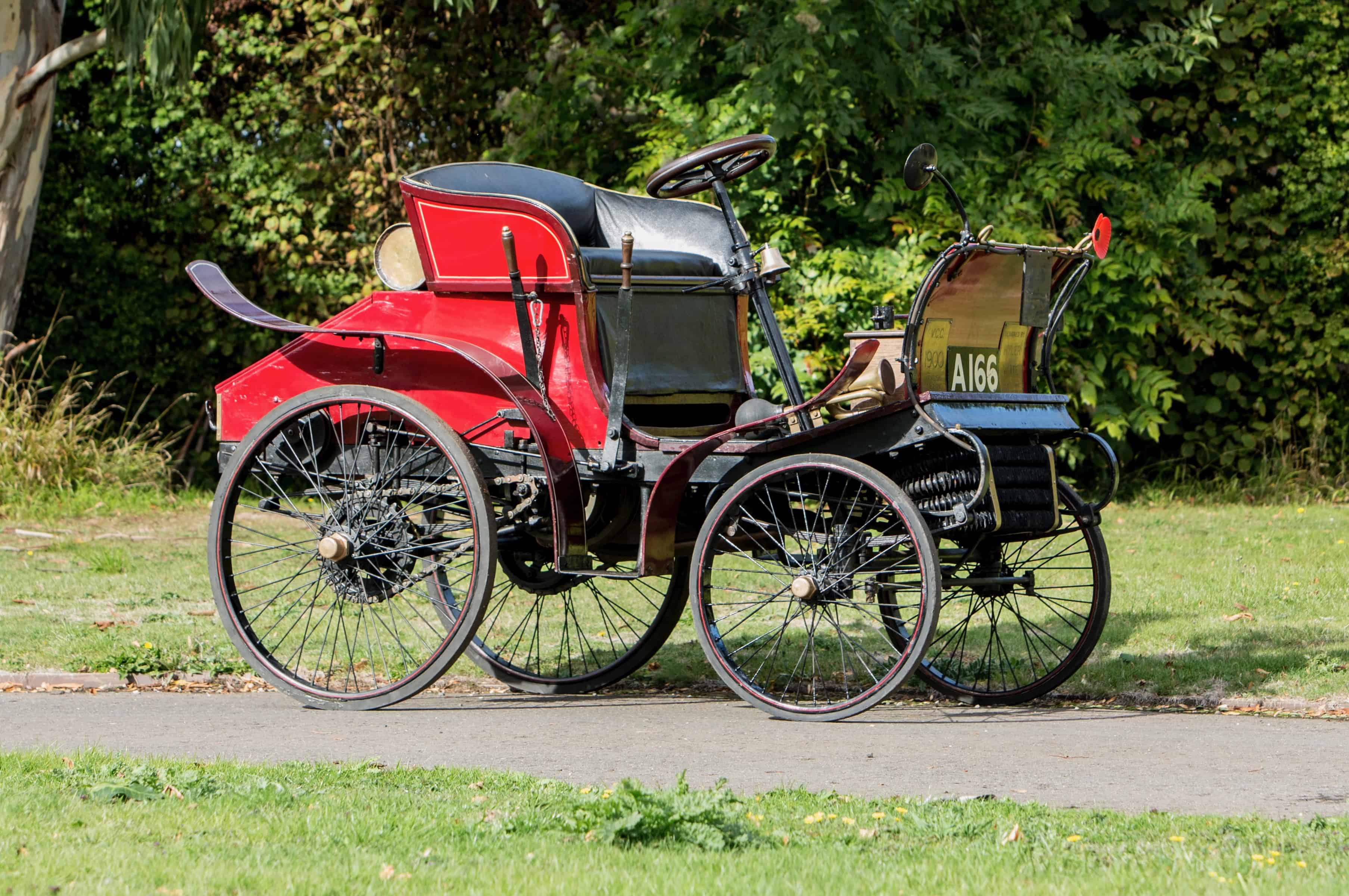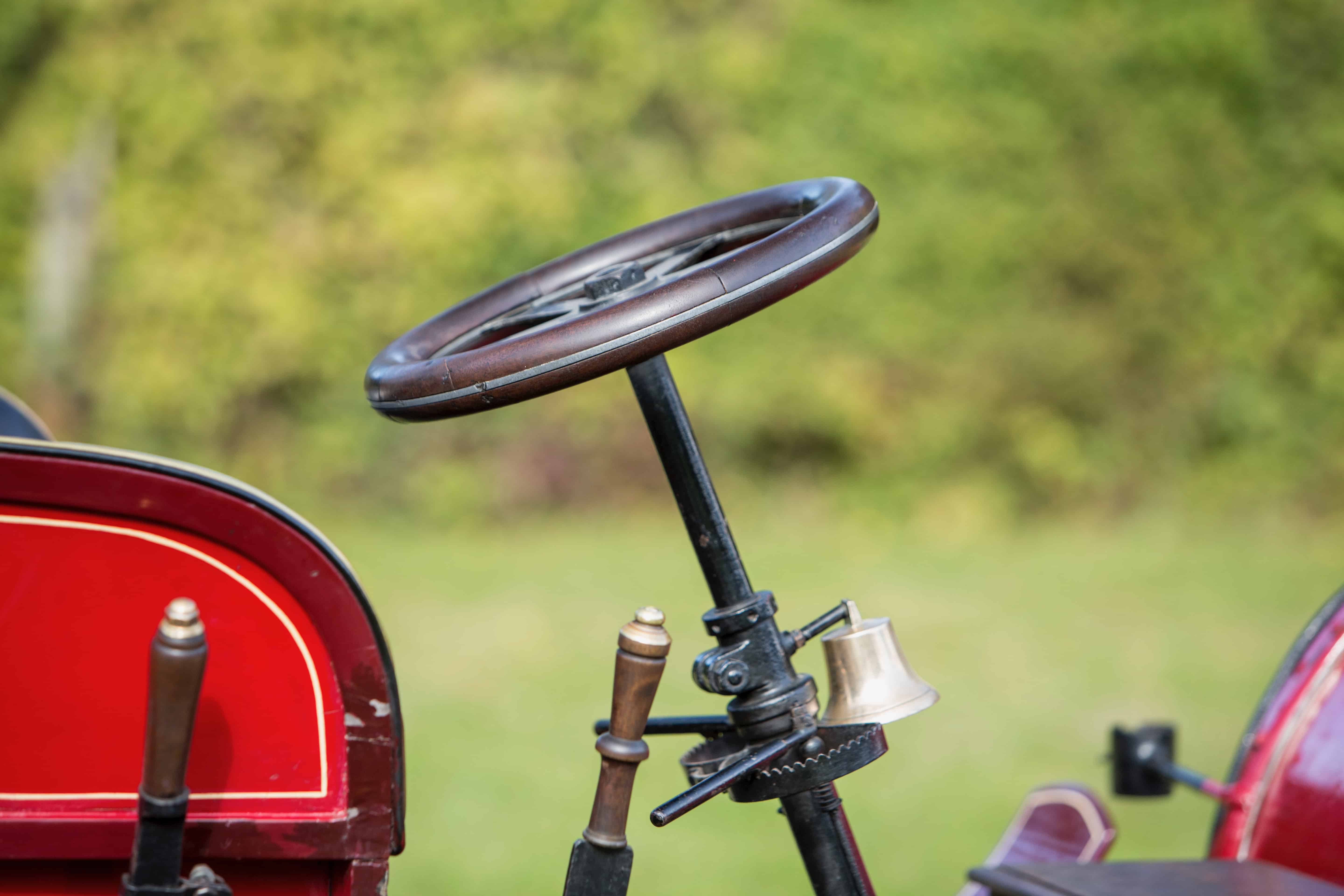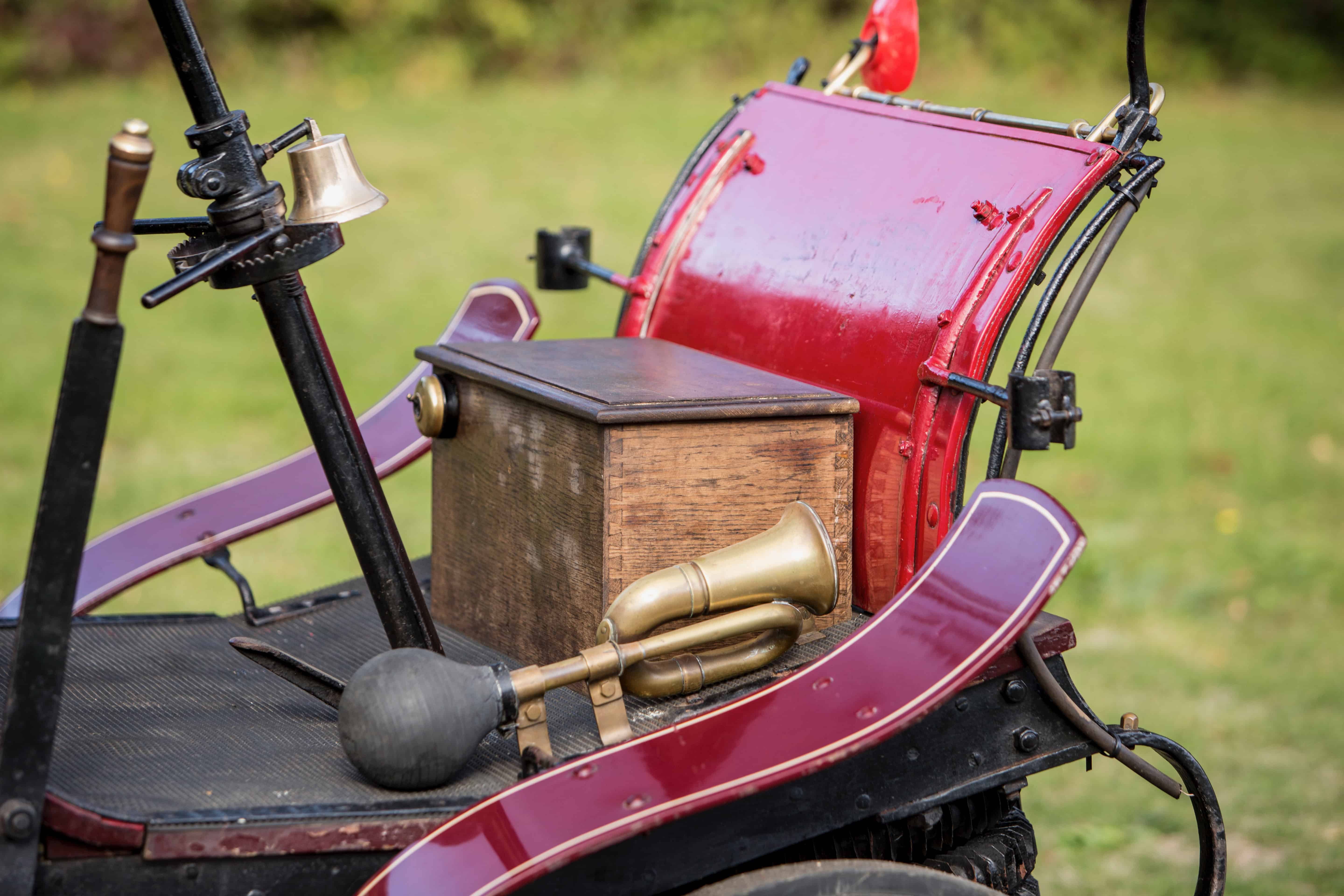What is being presented as the world’s oldest do-it-yourself motorcar will be offered up for bidding November 2 at Bonhams London to Brighton auction. The car is a 1900 “English Mechanic” 3HP two-seater.
English Mechanic was an inexpensive “tuppeny” magazine that in 1900 began a series entitled “A Small MotorCar and How to Build It.” During the course of 31 weeks, everything from engine drawings to cylinder cast patterns were shared with readers, “everything a young motoring enthusiast needed to build their very own vehicle,” Bonhams said.
“The author built his own car along with the instructions, which subtly changed as he discovered practical flaws in his work.”
As it turned out, the author was a 29-year-old engineer named Thomas Hyler-White, who had worked at Daimler Motor Company in Coventry from 1896-98 and who, in 1896, had taken part in the Emancipation Day Run, which the London to Brighton event celebrates each November.
While authoring the home-built series for the magazine, Hyler-White was employed by a company that supplied engine castings for the car for those, as Bonhams puts it in its catalog, “unadventurous (or sensible) enough not to attempt to build an iron foundry in their back garden.”

Even with such parts supplied, constructing the home-built car was daunting enough.
“ ‘I have adopted the single-cylinder horizontal motor and belt transmission gear as the most simple arrangement’,” Bonhams quotes the first in the series of articles in the magazine.
“ ‘The use of belts makes a much more silent car than gearing; the starting is more gradual than with the usual friction clutch as used with gear wheels, and with quite a moderate amount of attention they will be found to work extremely well… While fully recognizing the desirability of having plenty of power, yet it must not be forgotten that a very powerful motor mounted in a light car gives rise to unpleasant vibrations and tends to shake the carriage to pieces very rapidly.’
“ ‘Therefore, for our carriage, which is intended to carry two persons only, I believe the happy medium will be a three-brake horsepower engine.’
“Now this wasn’t do-it-yourself for the faint-hearted,” Bonhams adds. “The following week came general arrangement drawings of the engine and in week three came instructions on how to make the pattern from which the iron cylinder would be cast. And, having cast it, how to bore out the cylinder on your home lathe…
“And so it went on for thirty-one weeks…”
“Several English Mechanic cars were built, but the one going to auction is believed to be the oldest known survivor, though for many years, nobody was quite sure what it was.
“It was discovered in 1921 in a field in Kent and had been lying there for so long that a tree had grown through the chassis,” Bonhams reports. The finder of the car was C.A. “Bath Road” Smith, a former record-setting cyclist and landlord of the White Lion at Cobham in Surrey.
“It was assumed to be a Benz thanks to its single-cylinder engine and was entered under that name in the London to Brighton Run in 1928.”
Although the car didn’t complete the full Run that year, it did make the full London to Brighton route in 1929 and 1930, and was entered again in 1932, succumbing en route to a water-pump failure.
At some point, its owner decided the car likely wasn’t a Benz but probably was a French clone of the early Benz, a Hurtu.
That identity was shown to be incorrect after World War II when a real Hurtu of similar vintage was discovered and it became obvious the cars were produced by different manufacturers.
Finally, sometime in the 1950s, the car was owned by Veteran Car Club member Reg Taverner, who finally was able to correctly identify the vehicle. Late in the 1950s, he sold the car to Louis Holland, who performed “a much-needed restoration” before selling the car in the mid-’60s to George Dorrington, who entered it in the Run on an annual basis and was the father of the vehicle’s auction consignor.
“On the Run in 1972, the owner pulled up at a garage in Redhill where he chanced upon an 85-year-old mechanic who happened to have been a boyhood friend of none other than Thomas Hyler-White,” Bonhams said.
Before they had motorcars, the friend remembered that Hyler-White had home-built a bicycle and a steam engine to power it. Hyler-White also wrote for the mechanics magazine about building a motorized tricycle (in 1899) and about building steam- or petrol-powered vehicles as late as 1913. He died in 1920 at age 48.







